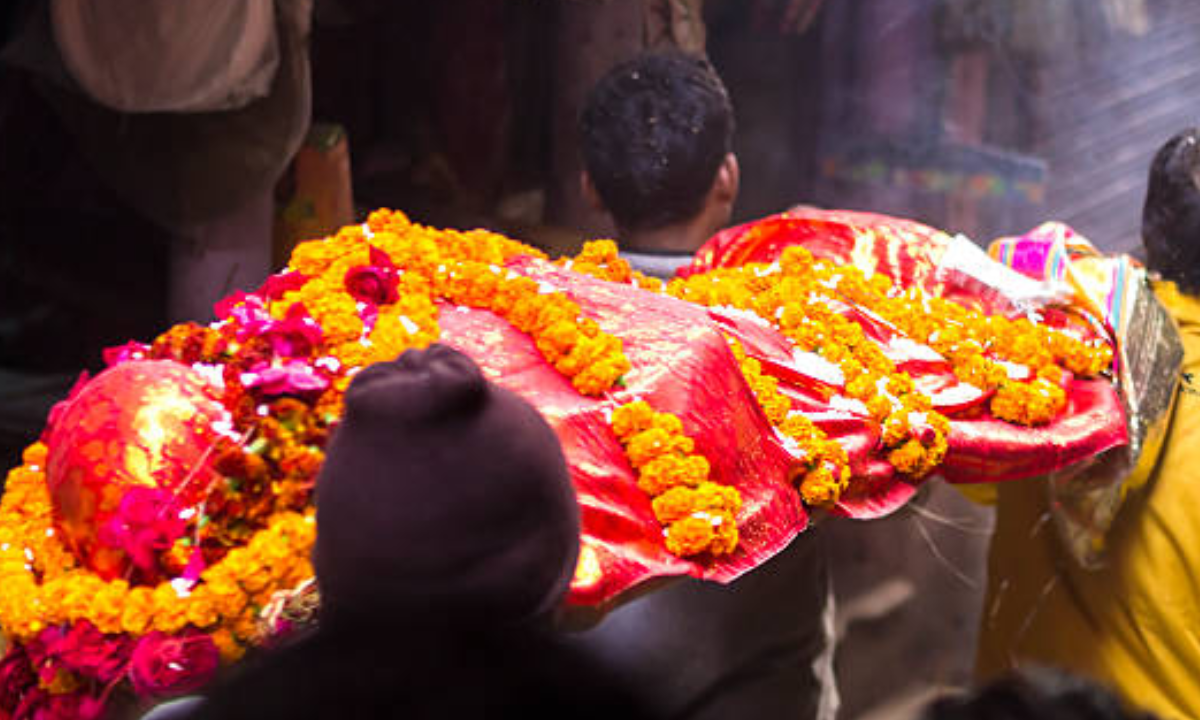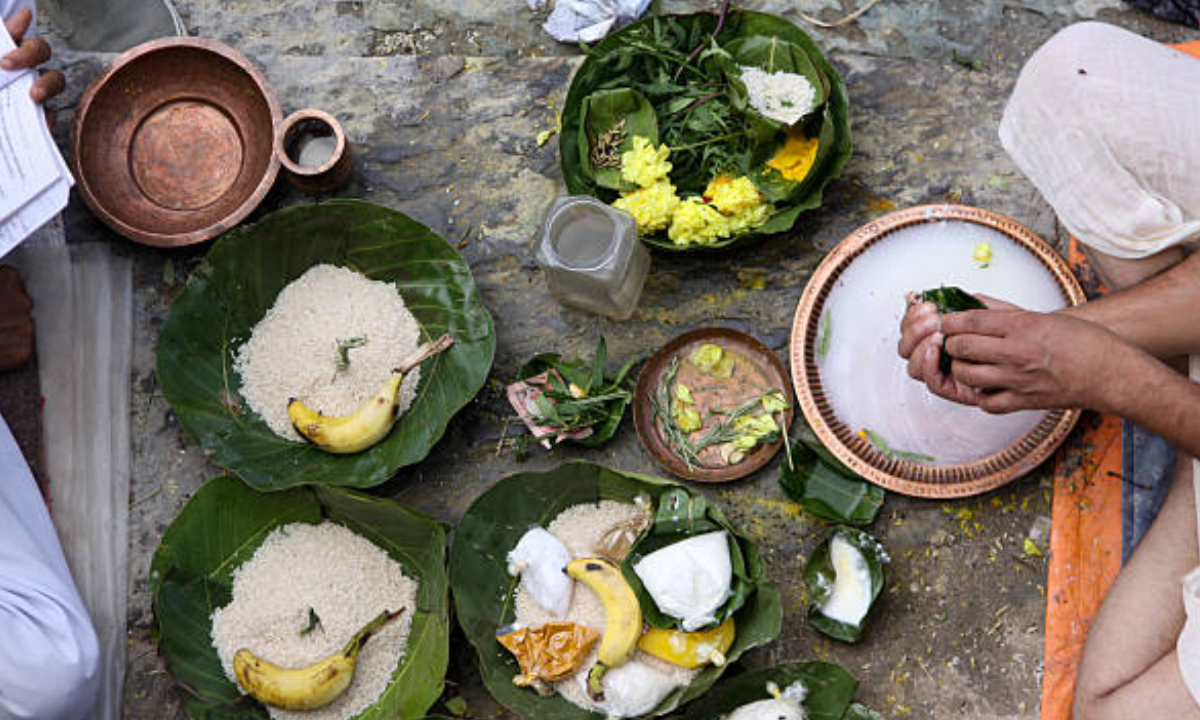One of the oldest religions in the world, Hinduism is often respected for its strange, and exceptionally spiritual, practices surrounding the perspective on life and death. In Hinduism, death is not considered as an end but is considered to be a phase in the life to be continued another life after. Hindu beliefs in reincarnation drive everything from the rituals around death. Yet, like so many ancient customs hindu after death rituals are often misunderstood or permitted to be muddled with myths.
This article will help us break down the myths and misconceptions of Hindu after-death rituals, separate the real facts from the fiction, and finally find the actual meaning and purpose of these sacred practices.
What Does the Soul Mean in Hinduism?
Hindu philosophy assumes the soul, or ‘Atman,’ is eternal and freed of the physical body. The body is temporary, the soul is part of the play of life to life, carrying the fruits of the karma performed. There are Hindu death rituals designed to help with this transition and help the soul quietly ease its way off the plane and into the next stage of its journey.
Hindu After-Death Rituals – Common Myths

Let us first look at some widespread myths and misunderstandings about these sacred customs:
Myth 1: The Soul Is Considered Less Important than the Body
One of the most common misconceptions about Hindu after-death rituals is that they revolve around the body of the deceased.
Fact: The ritual for cremation and what to do with the physical remains is preceded by a complete process, but Hindus aren’t looking at the physical part of the body, but the soul’s peaceful journey. The rituals however are more symbolic and are focused on releasing attachments of the soul to the physical world.
Myth 2: Hindu Funeral is Only Cremation.
Cremation is considered by many to be the only possible way a Hindu funeral can be conducted.
Fact: Cremation is the most common practice, but not the only one. In the past, saints and ascetics were buried instead as they spiritually evolved. That is because their bond to the physical form dissolved way back then. Just as infants and young children are buried, so their souls are believed to be pure and untouched by karma.
Myth 3: Priests Must Conduct Entire Ritual
Priests are usually thought to be indispensable to conducting Hindu after-death rituals.
Fact: Although the priests are important, a lot of Hindu rituals can also be performed by the family members. Traditionally key rituals such as the lighting of the funeral pyre are performed by an elder close male relative of the deceased.
Myth 4: Death Rituals are only about Mourning
Outsiders mistake these rituals for mourning and grieving because of the sorrow in them.
Fact: In fact, Hindu after-death rituals are as much rituals of honor for life as for grief. It is the clear balance between mourning the deceased and the release of the soul to miss its cosmic journeying.
Hindu After death rituals process
To understand the true meaning of Hindu after-death rituals, let us delve into the step-by-step process:
1. Antyesti (The Last Rites)
The Cremation of the body is called Antyesti literally it means last sacrifice. In this stage, the deceased is bathed, dressed in new or clean clothes, and laid on a pyre.
A priest chants Vedic mantras, and the eldest son or relative lights the pyre. Cremation is used to symbolize the liberation of the soul from the mortal body, often with the hope that the departed will attain ‘moksha’—freedom from the cycle of rebirth.
2. Ashes immersion, also called Asthi Visarjan
The ashes and remains of the cremation are collected and immersed in a sacred river usually (and most popularly) the Ganges. It’s not just a physical action, but it symbolizes the joining together of death’s earthly affiliation with the cosmos and nature.
3. The Mourning Period
In accordance with regional tradition, normally family members of the deceased observe a mourning period of 10 to 13 days. At this time they will have rituals and prayers for the departed soul to make peace.
4. Shraddha or Pind Daan
In the latter case, Shraddha is performed in honor of the ancestors and to help the departed soul on its journey. Offering food (Pind Daan) is done to make sure that the soul is satisfied and has food in the process.
The Truths Of Matters Hindu After-Death Rituals
We’ve dealt with some myths now, so it’s time to discuss some interesting facts that not everybody may know.
1. Rituals Vary by Region and Community.
However important, it is necessary to keep in mind that there is no one uniform way of doing Hindu after-death rituals. However, there are many interpretations and methods of the art by communities all across India. Things can be different in South Indian rituals as compared to those in North India.
2. Animals and Birds Play a Role
According to Hinduism, animals in general, especially cows, dogs, and crows, are symbolic bearers of messages to the spiritual world. During the Shraddha ceremony, it’s common practice to feed crows, for they represent the ancestors.
3. The Role of Karma and Dharma
The results of either an individual’s actions (karma) or duty (dharma) determine the next birth. The purpose of families is to do rituals as close to as possible to allow the soul to do its transition.
How Rituals Continue To Be Relevant In Today’s World
When it becomes easy to question why people in the modern world practice centuries-old rituals they don’t even know why they do it. But Hindu after-death rituals still command very much attention among those who keep faith that they are powerful for the spiritual and emotional.
These rituals serve as closure to the family – they accept their loss. They also serve to remind the living of the impermanence of life and so should live virtuously.
Final Thoughts
This is the wonderful religious aspect of Hindu after-death rituals. For those of us who aren’t familiar with them, they appear to be elaborate or even complex, but they include a great philosophical approach to life, death, and the journey of the soul.
These sacred practices take place in a world full of speculation and misunderstanding; be respectful and open-minded as you approach these sacred practices. In debunking myths and knowing exactly what intent these rituals have, it helps to appreciate that they hold so much wisdom for us Hindus and non-Hindus alike.
In the end, Hindu rituals related to death are a poignant metaphor for and a reminder of what passes and what exists other than these mortal coils—took on generalities and apply to human beings as a form of communication about what really remains even at our passing, a lesson which transcends faith in some sense and is revelatory of the heart of existence.
Kaashimukthi offers caring and professional cremation services in Pune along with support for families to follow Hindu traditional after-death rituals with dignity and care.

Madhu is an Entrepreneur, a Mentor, a Writer and an Aspiring Car Race Driver. He is Deeply passionate about leveraging Technology and Human Centred Design to make complex care and End of Life Planning easier. With the ultimate aim of Improving the quality of Life in the Twilight years. Madhu is highly educated and Alumni of IIM-Bangalore, Sikkim Manipal University and Bangalore University besides a Rich Industry Experience in the field of Product Management, Design, Supply chain, Finance, Commercial Management and Funeral Services.

